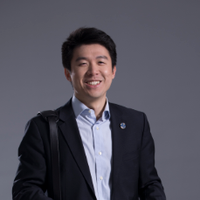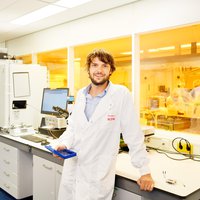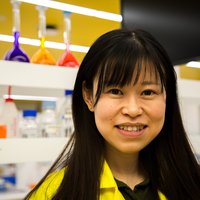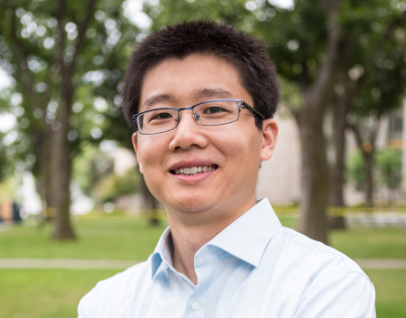Ling Li,
an assistant professor at Virginia Tech, has made a number of important
contributions to our understanding of how nature constructs multifunctional
materials. During his Ph.D. studies, Li focused his work on biological materials
with simultaneous optical and mechanical properties. A mollusk
shell called Placuna placenta comes
into view: despite the fact that the shell is made of 99% brittle calcite, it dissipates
energy 10 times more efficiently, while, more remarkably, maintaining optical transparency.
It was later
found that the shell has a multilayered structure, consisting of roughly a
thousand nanoscopic calcite layers. Each
mineral layer has a thickness of about 100 nanometers. In contrast, the organic
interfaces between adjacent layers are only one or two nanometers. This structural
design allows the light to travel through the composite without being significantly
scattered by the interfaces, which makes the mollusk shell highly transparent. Moreover,
the crystal structure of the calcite layers undergoes a
special deformation mechanism at nanoscale, known as twinning, when the
structure is exposed to external forces. Such process works synergistically with
the thin organic interfaces to constrain crack propagation and hence limit mechanical
damages.
During
his later research, Li discovered the image forming capability from the unique
mineralized eyes of a group of mollusks. These creatures, known as chitons,
live in the intertidal waters and have hard mineralized shells over their soft
body. Some chitons evolved to develop mineralized eyes with a diameter of less
than 0.1 mm embedded in their hard shells. In this work, Li’s team,
for the first time, demonstrated that images can be formed through these
mineralized eyes, which is remarkable considering most eyes in nature
are based on organic materials.
Li said
that our in-depth understanding of biological materials will have a great
impact on the development of new materials and functional structures. For
example, Li recently led his team to systematically investigate a unique class
of biological armor that simultaneously provides mechanical protection while
being highly flexible. Moreover, the mechanistic understanding of the
biological system allows his team to design and develop a new type of bio-inspired
flexible armor.
For his
future research, Li hopes to focus more on natural porous materials that are both
lightweight and strong, such as bones. Meanwhile, how organisms construct
their complex microstructures is another focus of Li’s team. He hopes that one
day people can make new materials in similar ways to biological
systems.




